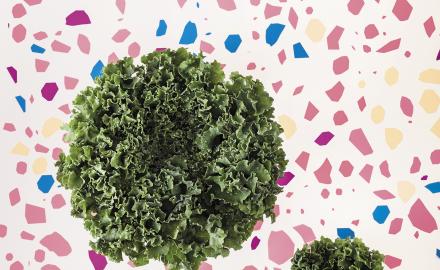Salt
A natural ingredient
Essential for the proper functioning of the organism (in moderate proportions!), salt may be extracted from mines or quarries that formed millions of years ago, where dried-up seas or lakes used to stretch – that is rock salt –, produced industrially in plants – it is then referred to as refined or vacuum salt – or harvested in salt ponds once the water has naturally evaporated and the salt has crystallised – resulting in coarse salt, fine salt and fleur de sel.
Fleur de sel
Harvested by hand on the surface of the water, fleur de sel is the treasure of salt farms. Uncrushed and unwashed, those crystals are very rich in minerals. To preserve their qualities, they are best used after cooking or sprinkled on crudités. A jewel among terroir salts – those produced in Guérande and on the islands of Ré and Noirmoutier being the most renowned in France –, fleur de sel is also commonly used in pastries; it is usually paired with chocolate or caramel.
Salts from around the world
Red Hawaiian salt is made from saltwater mixed with alae, a type of red clay, which gives the product its wonderful brick colour. A perfect option to season fish and grilled white meat, this salt displays delicate flavours of roasted hazelnut. Aside from its decorative value, it also brings a touch of originality to your plates.
Harvested on Molokai, a volcanic island in the Pacific, black Hawaiian salt owes its colour to activated charcoal, which is added to the water in evaporation ponds. Its crunchy crystals, which are particularly rich in minerals, exhibit delicate flavours of hazelnut. Black salt should be used as a finishing salt on fish or grilled meat.
Harvested in salt mines on the foothills of the Himalayas, more than a thousand feet below the ground, pink Himalayan salt is characterised by its unique purity and its light pink hues, which are due to high concentrations of iron. Non-iodised and unrefined, this mild rock salt makes a wonderful addition to fish and grilled meat dishes.
Smoked with red alder wood, Salish salt is a variety of sea salt produced in the state of Washington. This brownish-greyish salt, with its surprising smoked flavour, magnifies meat and grilled fish.
Smoked with apple tree wood, Mexican black salt brings out the flavour of fish, shellfish and sautéed vegetables.
Harvested from salt mines in the mountains of Iran, Persian blue salt is characterised by beautiful deep-blue crystals. This spicy-tasting salt goes wonderfully with red meat.
Produced in Norway, Viking salt consists of crystals flavoured with onion, curry, turmeric and black pepper. This yellow-coloured salt brings a smoked taste to omelettes and potato gratins.
Wine salt
Wine salt is thought to have originated from the turmoil of the sea, back in the early 20th century. When wine began sipping from barrels transported on a cargo ship, it marred a heap of salt, rendering it seemingly worthless. A wine merchant’s wife, Valentine Cornier, then had the idea to add spices to the tinted crystals. Thus, wine salt came to be! Her grandson, Pascal Delbeck, later adjusted the secret recipe and broadened the range of ruby-coloured crystals by mixing three varieties of wines – Merlot, Cabernet and Syrah – with spices and salt from the Island of Ré.

